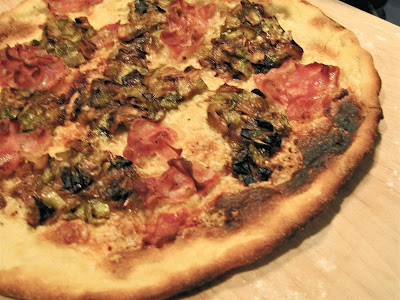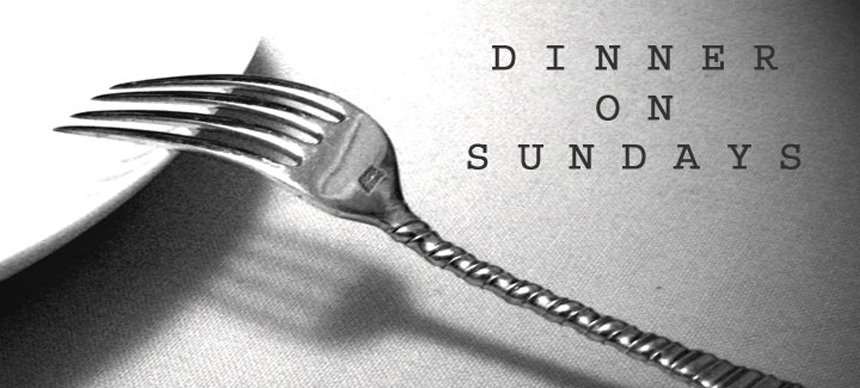
People who know me are well-acquainted with my variety problem. Given the choice between a tried and true recipe or a new one, I'll nearly always go with the novel option. It only makes sense when you have piles and piles of new things to try! But this also means that without special requests for dinner, I would probably never make the same dish twice. Basics like pizza serve as a good compromise -- we have it often enough that I've had time to perfect the recipe, and the toppings can be varied to keep me from getting bored.
The pie in the photograph, which is rather unfortunately colored, was topped with Gruyere cheese, pancetta and leek confit. It was a great combination of creamy cheese, salty meat and slightly sweet caramelized leeks. Still, the pièce de résistance is always the crust. The Italian 00 flour is very easy to stretch extra thin, and it crisps up brown in spots on the pizza stone. It's so good, even I would happily eat it on a weekly basis.
Pizza Dough
Our local, specialty food store has started to carry Italian 00 flour, which I think produces superior dough. It's not as springy as all-purpose flour in this application, and it results in a very crispy, cracker-like crust. If you do use ordinary flour, just be sure to let the dough rest where noted.
Also, you can make this dough without a stand-mixer, using a wooden spoon. I used to do it this way, but the stirring required gives quite a work-out.
20.5 oz. high-gluten flour (preferably chilled)
0.5 oz. salt
0.1 oz. instant yeast (about half a packet)
2 oz. olive oil
14 oz. cold water
cornmeal
Stir together the flour, salt and instant yeast using the paddle attachment of a stand mixer. Add the oil and water and mix until just combined. Switch to the dough hook attachment, and knead on medium speed for 5 to 7 minutes. The dough should look smooth and evenly mixed. It will be rather sticky, but it should mostly clear the sides of the bowl. If the dough is too wet, sprinkle in a little more flour. Or if the dough clears the bottom of the bowl, and is too dry, add a few drops of cold water.
Prepare a sheet pan by lining it with oiled parchment or a Silpat. Transfer the dough to a floured board or countertop. Using a dough scraper or a knife, cut the dough into four equal pieces. Sprinkle flour over the top of each piece, and shape each one into a ball. Transfer the balls to the sheet plan, and spray with oil. Either slip the whole pan into a food-grade plastic bag or cover with plastic wrap.
Put the pan into the refrigerator to rest overnight (or up to three days, but check to make sure it's not drying out). Bring dough to room temperature before you begin to make the pizza, about 2 hours. (At this point, I usually put the remaining balls in the freezer in individual Ziploc bags.) Sprinkle a pizza paddle or the back of a cookie sheet with cornmeal. Gently press the dough balls to about 1/2 inch thick. Cover the dough with plastic wrap and let rest for 2 hours (this seems less crucial with the 00 flour).
At least 45 minutes before making the pizza, preheat a baking stone in the oven as hot as it will go. To stretch the dough, gently stretch it across your fists and bouncing it gently in a circular motion. If the dough sticks to your hands, dust them with a little flour. If the dough keeps springing back, let it rest for a few minutes before continuing.
When the dough is stretch to your satisfaction, about 12 to 14 inches, lay it back on the peel, making sure there is enough cornmeal to allow it to slide. Top as desired, keeping in mind that a heavy pie will be difficult to release from the peel.
Slide the topped pizza onto the stone and bake until starting to brown lightly on the edges, five to eight minutes. Remove the pizza from the oven and transfer to a cutting board. Wait a few minutes before slicing, then serve.
Makes four medium size crusts.






No comments:
Post a Comment